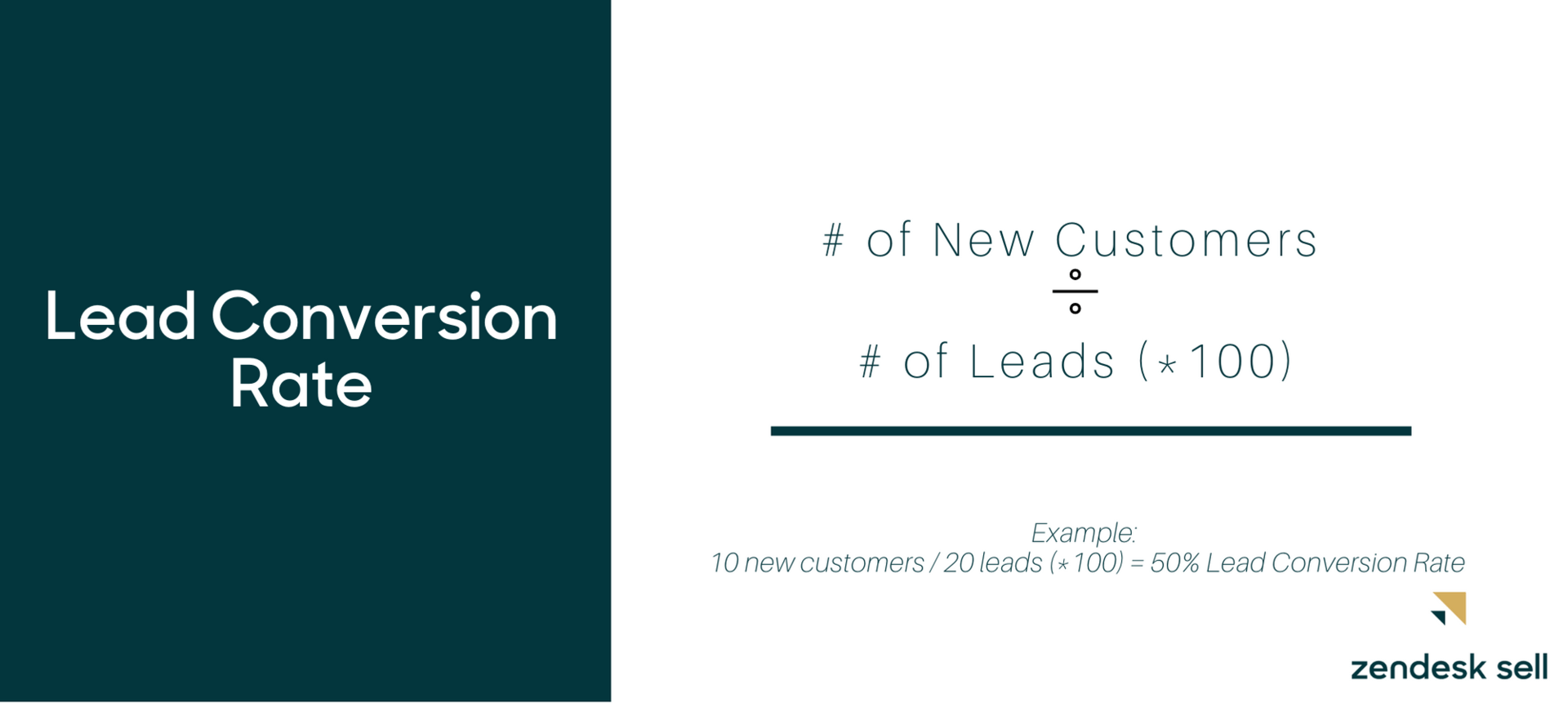Article • 9 min read
How to use sales psychology to increase lead conversion rates
著者: Caroline Chromik, Senior product marketing associate
更新日: March 26, 2022
Sales is a mind game. You can’t expect to convert a lead into a customer if you don’t understand the motivations behind their purchasing decisions. Why? Because humans have innate psychological tendencies—cognitive biases—that affect their perspectives and decisions. If you want to convert more leads, you have to understand what motivates them and how to use that to your advantage.
This article is a guide to doing just that. We’ll start by explaining how to calculate lead conversion rate. From there, we’ll dive into five cognitive biases sales reps can use to close more deals. Let’s get started.
How to calculate lead conversion rate
Lead conversion rate can mean different things depending on whether you’re a marketer or a salesperson. For this post, we’re defining it as the number of leads who convert to sales.
Start by adding up the total number of new customers converted in any given period. Divide that number by that total amount of leads pursued and multiply by 100.

For example, if you pursued 20 leads in the month of August and 10 of those leads converted to new customers, your lead conversion rate would be 50%.
Of course, a 50% lead conversion rate is a benchmark most of us could only dream of achieving. But that doesn’t mean we can’t improve our own numbers. The key is understanding the sales psychology behind customer leads and knowing how to spin it in your favor. Let’s talk about what that looks like in practice.
5 ways to use cognitive biases to increase lead conversion rate
Cognitive biases translate into the why behind a lead’s decision-making process. If you can understand how these biases may be affecting leads, you’ll have a better idea of how to pitch your product in a way that appeals to them and leads to a purchase.
There are five common types of cognitive biases that influence a lead’s buying journey. We’ll start by defining each one. From there, we’ll explain how each bias plays out during a rep’s interaction with a lead and how they can be leveraged to convert a difficult lead.
1. Loss aversion
Loss aversion is the idea that people are more worried about losing something than gaining it. As many say to explain the principle, “it is better to not lose $5 than to find $5.”
If you want to persuade a lead to convert, provoke their loss-aversion bias by giving them something that only lasts temporarily. Something of value they’d take action to avoid losing, like a *free trial*.
As an example, let’s say a lead has been using your product for a few weeks on a trial basis. Your product has alleviated their workload, improved their efficiency and streamlined the workflow. Tap into your lead’s loss aversion by notifying them that their trial is about to come to an end. If your lead knows they’re about to lose something of value, they’ll be motivated to keep that from happening by purchasing a paid plan.
Another loss-aversion tactic is price comparison. Let’s say your lead is currently paying for a competitor’s product at $150 a month. Your product has all the same functionalities but at $100 a month. Tap into their fear of loss by saying, “You’re losing $600 a year by staying with your current vendor.”
Rather than focus on what your lead can gain by switching to your product, emphasize what they’ll lose if they don’t. This tactic motivates a lead to make a decision quickly and increases lead conversion rates. Learn more in this sales blog.
2. Confirmation bias
People will interpret new information in a way that supports their beliefs, even if it doesn’t. This psychological phenomenon is known as confirmation bias.
In sales, confirmation bias can be an obstacle to successful product pitches. You’re trying to sell your leads on your product with case studies and testimonials, but some existing belief prevents them from absorbing the information. Check out these sales pitch examples for inspiration.
For example, a lead might believe that your competitor’s product is best based on name-brand recognition. Heavy advertising has made it a household name, and all your lead’s peers are using it. That means it must be the best, right?
Unfortunately, when someone with the confirmation bias comes to a conclusion like this, it’s nearly impossible to persuade them otherwise. You could be in a sales meeting comparing apples to apples, clearly proving your product is superior to the household name your lead is using. But it won’t matter because your lead will interpret anything you say as supporting their own perspective.
If your lead starts exhibiting confirmation bias, take a step back and do the following:
- Don’t argue. You’re not going to change your lead’s mind by arguing with them. And for that matter, challenging them may turn them off entirely, causing you to lose a sale.
Listen. Try to identify what your lead’s goals are. Ask them what they want to get out of their current product, what they like about it, and what could be improved. This way, you can have an honest discussion about their challenges and how you can help solve them.
Empathize. Take the time to understand your lead’s perspective. Confirm their experiences and thoughts to avoid putting them on the defensive. From here, you can offer suggestions that complement their needs and reasoning.
Collaborate. Rather than present a solution, ask your lead to talk through their challenges. Ask questions that inspire your lead to evaluate whether their current solution is meeting their standards. When your lead decides to switch to using your product, they will have felt as though they came to the conclusion on their own.
When it comes to the confirmation bias, brand names, facts and figures only hinder the conversation. To convert this type of lead, throw the data out the window. Get to know your lead instead. Find out what their business goals are, along with what roadblocks are hindering them. This will help your lead look past the name brand and realize what they really need is a better solution. Your solution.
Improve your sales process
A good sales process is the foundation of any successful sales organization. Learn how to improve your sales process and close more deals.
3. The halo effect
First impressions matter, especially when it comes to the halo effect. This bias refers to one person’s snap judgment of another, based solely on one physical characteristic.
As a sales rep, a single aspect of your appearance or speech can either solidify a lead’s trust in you or turn them off completely. Pay attention to what you wear, how you speak and how you present yourself.
It’s absolutely paramount to establish a positive first impression with a lead who has this cognitive bias. If successful, you’ll ensure your lead converts, and quickly. Here are a few things to keep in mind when meeting with a lead:
- Clothing. You don’t always have to dress formally to impress a lead. It depends entirely on who you are pursuing. For example, a more casual and laid-back look might gain the immediate trust of a young tech company. Tailor your appearance based on what will make your lead feel most at ease.
Speech. Confidence is everything. Assure your leads you know what you’re talking about by avoiding words like “umm” or “uhh…” Also, try to avoid unnaturally long pauses, improper English, offensive words or slang that might turn your lead off.
Body language. Remember to make eye contact. Avoid common body language mistakes like crossing your arms or fidgeting.
Leads who have this particular cognitive bias are easily persuaded to favor — or condemn — one vendor over another based on appearance alone. Sales reps can increase their lead conversion rate by taking advantage of this bias and dressing to impress.
4. Bandwagon effect
Think of this cognitive bias as the “everyone’s doing it” herd mentality FOMO effect. In sales, the bandwagon effect is in play when consumers base their purchasing decisions on social proof (e.g., buying a product because their peers are using it).
Leads with this cognitive bias want to purchase a product that already has a verified track record of success. After all, no one wants to be a guinea pig. People want to invest in a sure thing, a product they know is going to benefit them.
To convert leads with the bandwagon bias, present data that proves your product is widely used and loved. Send them links to:
- Review sites. If you’ve received rave reviews from past or current customers, send them to your leads. Buyers are more likely to jump on your product’s bandwagon if their peers are endorsing it.
Customer testimonials. Testimonials provide in-depth knowledge of how your product has benefited users. They allow leads to envision how your solution might fit their own needs.
References from trusted sources. Endorsements from highly respected companies help solidify a lead’s trust in your product, even if they’ve never used it before. If you’ve received written praise from well-known and trusted companies, send that proof to your leads.
The more popular your product appears the more interested (and likely to convert) your leads will be.
5. Anchoring Effect
The anchoring effect is the idea that people make decisions based on the first piece of information they get. Salespeople often manipulate this bias when discussing product pricing. They’ll make the actual cost of the sale seem more appealing by prefacing it with a higher price.
For example, let’s say you’re on a call with a lead, and they ask how much your product costs. There are two ways to answer:
1. “We charge $100 a month.”
2. “Normally, we charge $150 a month. But because we really want to work with you, we’ll knock the price down to $100.”
Even though both offers reflect the same price, option #2 sounds more appealing. That’s because we provided an anchor, a comparison point to make the $100 price seem like a special deal not-to-be-missed.
People want to buy the products at the best prices. The anchoring effect helps buyers feel comfortable that they’re getting a great deal, increasing the likelihood of a purchase.
Increase your lead conversion rate with sales psychology
Consumer perspectives are heavily influenced by cognitive biases, such as the ones above. To increase your lead conversion rate, you need to understand how these biases play out in day-to-day sales interactions, along with how to spin them in your favor. Let this article be your guide to driving more sales.
